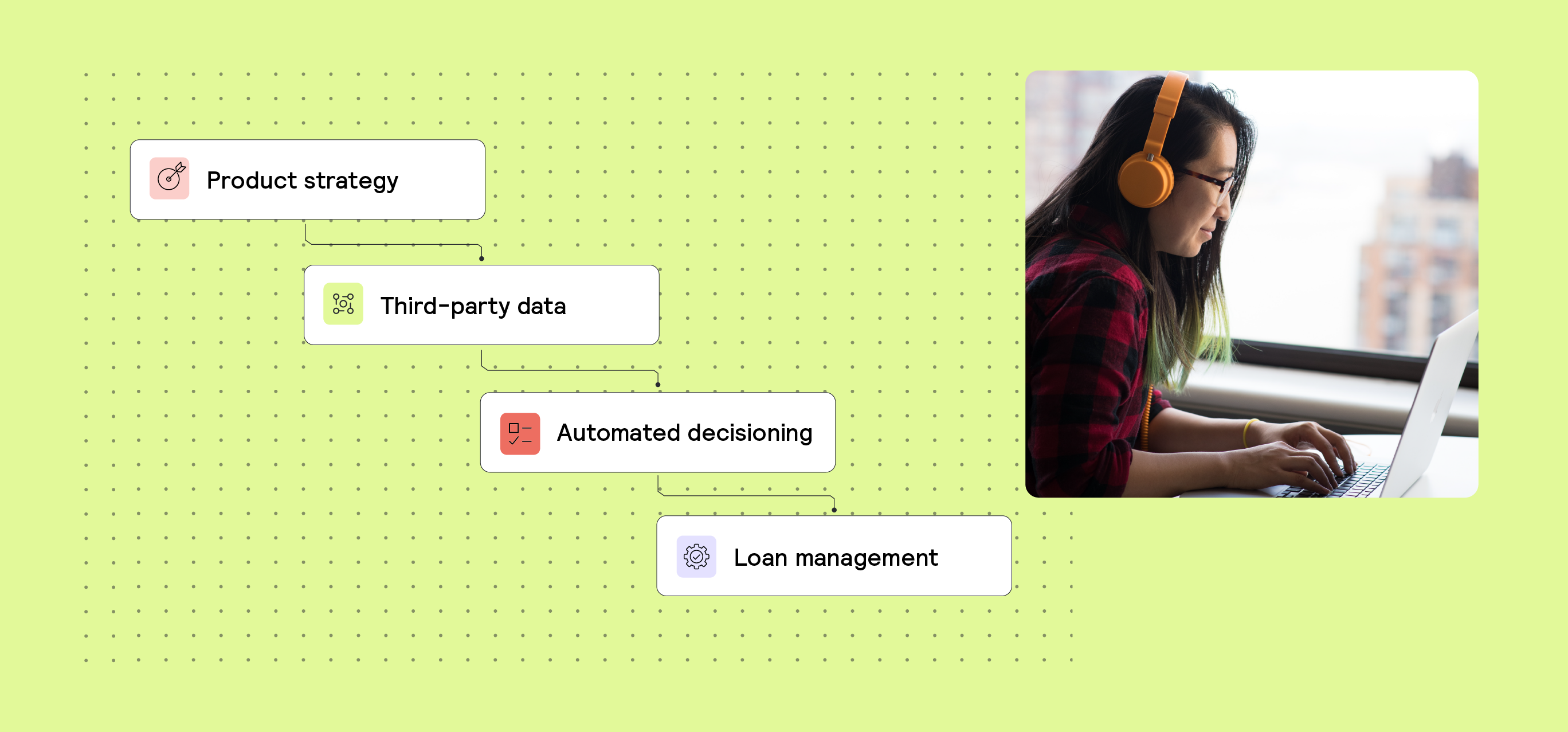B2B, Fintech 3 min read
Money 20/20 Recap: Bringing B2B SME payments and financing up to speed

In recent years, we’ve seen a revolution in the B2C payments space with the rapid adoption of BNPL platforms. But that pace of digitalization has lagged in B2B payments, even as expectations for service remain sky high. Why is that the case?
A couple weeks ago, I had the pleasure of tackling this question at Money 20/20 Amsterdam with several leaders in the B2B payments industry:
- Stephan Haslebacher, the Co-founder and COO of Moss, a leading spend management and corporate card solution in Europe.
- Ingmar Stupp, the Founder of Tilta, which provides credit-backed payment flows for B2B marketplaces and e-commerce platforms.
- Joan Swanson, the Head of Fraud Prevention at Mondu, which enables merchants and marketplaces to offer their business customers flexible payment options.
Here are the top-line findings and highlights from our discussion:
B2B payments are far more complex than B2C
Our panel highlighted two main reasons that B2B payments are vastly more complicated:
B2B is a series of continuous relationships versus one-off exchanges: One of the distinct challenges is that B2B payments are complex, multi-step, continuous processes. It is far simpler to purchase a single pair of shorts than to set up payments for a monthly purchase of parts for a fleet of 1000 trucks. First and foremost, the exposure is far higher; bad decisions will be costly. Furthermore, in the B2B model there are far more touch points, complicating the payments process. Many of these buyer-seller relationships are also global in nature, adding another barrier.
Purchases are embedded in a much wider procurement process: B2B payments involve a far more complicated purchasing process compared to B2C. When a consumer purchases a pair of shoes for a weekend away, there’s only one decision-maker. When a business makes a purchase, it is a multistep process involving insurance, approvals from multiple stakeholders and integrations into other company processes. Further complicating efforts, these processes are different in different industries. For example, a hair salon stocks up on supplies very differently than how a startup would purchase office supplies and laptops. Many of these payments are also fully offline, creating a need for digitization.
Given the heterogeneity of these processes across industries, there is an opportunity to develop specialized end-to-end solutions for verticals. For example, Outgo is a vertical banking solution for the freight industry that handles invoicing, accounting, factoring, and banking all in one place.
This complexity adds new barriers to fraud management and underwriting
The complexity of B2B payment processes makes it challenging to build accurate B2B fraud and underwriting solutions. At our panel, the speakers dove into the specific challenges of B2B fraud detection and underwriting.
Fraud: When identifying an individual, you can easily use a SSN or a combination of other standardized identifiers to create a 100% match. With businesses, you need a number of data points to make an accurate match. The required data points vary by the type of business you are trying to identify as well as the location they are operating in. Resolving that the entity that you are pulling is the correct one is very difficult in a cross border, cross entity network of identities that is inherent for B2B companies. On top of that, you must also ensure the person requesting to make the payment is actually authorized to make a payment.
Risk: On the risk side, the biggest barrier to assessing financial health of small or young companies without a history of audited financial statements and business credit is dealing with the heterogeneity across businesses. For example: cash flows for a barber shop will look very different from the cash flows of a pre-revenue startup. As such, different industries will require different data points and sources to make the right assessments.
New data sources and AI will be critical tools
To deliver a better user experience, B2B lenders will need to automate their risk assessment and provide a customer with a consumerized, i.e. near instantaneous, decision.
Given the complexity of identifying the right customers and assessing risk, leveraging new data sources is required for B2B companies to deliver on their value proposition. By using open banking, accounting and alternative data sources, B2B payments companies can automate their underwriting process to a larger degree, confidently extend loan offers to more good borrowers, and thus deliver a more immediate solution for customers. For example, alternative data that captures the relationship between buyer and seller provides lenders with great data. If a company bought steel 10 times and always paid on time, this is a great indicator of creditworthiness.
Sophisticated B2B lenders have also been very successful in deploying AI and machine learning to support their underwriting. As decision-making in B2B lending is less regulated than in the consumer context, ML-enabled underwriting models have been used for quite a bit of time. As of late, B2B lenders have successfully deployed large language based AI models (LLMs) to make sense of unstructured data such as transaction histories, which allows them to develop new, bespoke underwriting signals easily. This ability enables lenders to deal with the heterogeneity of the B2B context and correctly assess the financial health of companies of different sizes that operate in different industries.






